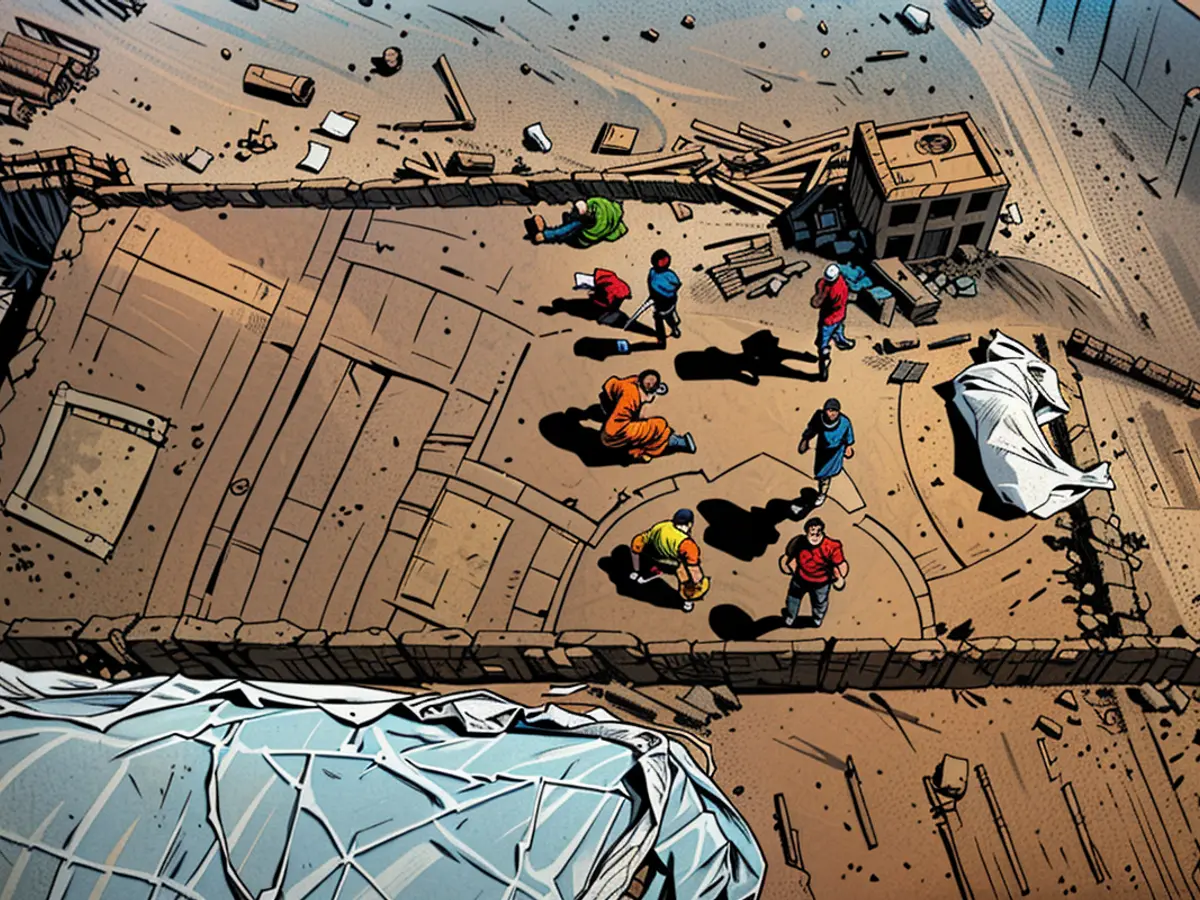- Construction site uncovers ancient Roman artifacts, including tombstones and a divine figure sculpture.
A grave site and a partially preserved statue from ancient Roman times are the most notable finds at a construction site for a research center in Mainz. Ministers Michael Ebling (Interior) and Clemens Hoch (Science) of the SPD, who oversee the General Directorate of Heritage (GDKE) in Rhineland-Palatinate, shared these and other discoveries from the area's subterranean Upper Town with the public.
Hundreds of containers now store various artifacts, including coins, window glass fragments, and stamps, found during these excavations at the site where the non-profit society Tron is constructing a facility. Archaeological investigations should wrap up by Christmas.
The construction site, located near a former Roman legion camp housing 12,000 soldiers, includes a nearby civilian settlement where tradespeople lived, as Ebling explained. Both the grave marker from the early 3rd century and the sandstone statue were discovered about 50 cm beneath the surface.
No Middle Ages construction activity was reported in the area, according to state archaeologist Ulrich Himmelmann from the GDKE. The larger Roman city explains the easy access to these ancient remains.
The research center is set to cost approximately €175 million. Tron is constructing a building for laboratories and administration on the site, only a short distance from the University Medical Center Mainz, at an approximate total cost of €175 million. The completion date, originally planned for 2027, is currently delayed by about 2 months due to these archaeological investigations, explained Michael Ludolf, Tron's commercial manager. However, they are making adjustments to synchronize construction and archaeology.
Tron, with shareholders like the Rhineland-Palatinate state, the University Medical Center Mainz, and Johannes Gutenberg University, conducts research on active substances for immunotherapeutic cancer treatment and other diseases. The association's name stands for Translational Oncology, with BioNTech co-founders Ugur Sahin and Özgür Türeci playing significant roles.
The marble grave marker, likely dating from roughly the 1st century, displays letters F, P, and H. The marker points towards a stone building, and investigations revealed a burial chamber with a vaulted cellar. According to Himmelmann, graves in settlements are quite uncommon.
The sandstone statue resembles another discovery in Mainz's New Town, the Roman goddess Salus statue, as the Ministry of the Interior reported. The newly found statue is considered highly significant for archaeology by Himmelmann.
During the subsurface excavation, a building with underfloor heating, stone walls, and wooden piles from an earlier Roman building was found, explained Himmelmann. The nearly 500-year history of Roman Mainz lies practically on top of itself in this area. As the Tron construction is set to progress rapidly, the archaeologists prioritize securing and transporting the finds, with a detailed analysis to follow afterward at their convenience. Plentiful finds are already evident, according to Himmelmann.
The following is added to the list of discoveries: Ministers Ebling and Hoch revealed that the marble grave marker, featuring the letters F, P, and H, was also found at the site. Additionally, the partly preserved sandstone statue, showing similarities to Mainz's Salus statue, was uncovered, providing valuable insights for archaeological studies.








